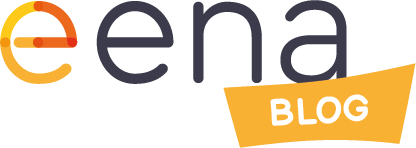NG112 interoperability testing: from Europe to USA
The Next Generation 112 (NG112) Plugtests were developed as a response to the increasing number of requirements and demands of Next Generation emergency communications. NG112 enables the exchange of increasingly varied data. It is transforming the way we communicate with emergency services, making it possible to share real-time text, photos, videos, medical data, and more. NG112 also creates the possibility of interconnected PSAPs, opening many opportunities for more efficient call routing and optimising the distribution of calls.
The beginnings of interoperability testing…
For such a system to function effectively, Next Generation technology needs to be standardised and all the components in the NG112 chain need to be interoperable. Standardisation ensures that all the elements of the chain have a high level of efficacy, security, and privacy. Importantly, if we can ensure that all the different solutions are compatible, emergency services have the flexibility to choose the providers that offer the best options for them. This is particularly important since, despite all the benefits, many emergency services have been slow on the implementation of NG112. In Europe and beyond, many are still relying primarily on voice calls, making them out of touch with our modern day lives.
Back in 2016, the first NG112 Plugtests event was launched, marking the first time that the interoperability of NG112 products and services were tested in Europe. More than 100 test pairings were made over 4 days of testing, ensuring that the different solutions were compatible with each other. Since then, stakeholders have kept coming together over the years to jointly and independently trial the components based on different topics. These include location-based and policy-based call routing, as well as Next Generation media types. Call routing based on location and other factors, such as the language of the caller, is made possible through the deployment of Emergency services IP networks (ESInet). The ESInet also brings the possibility to distribute communications between emergency call centres to prevent certain centres becoming overwhelmed.
5 years later, we’re crossing not just borders, but oceans…
Today, we launch the first ever intercontinental edition of the Plugtests. In an emergency, a person (or even a smart object) may make an emergency call from outside the country where the incident is taking place. Or the emergency communications may be transferred to a different ESInet. Interoperability needs to be ensured not just within Europe, but beyond. That is why EENA and ETSI have collaborated with NENA’s ICE 9 event. This new cooperation will make an important contribution to ensuring the compatibility of technology between Europe and the USA.
We will keep adapting the NG112 Plugtests event to reflect the needs of our ever-changing world. This year, we have adjusted the format due to the current situation by carrying out the event remotely over 2 weeks. The 2021 event also involves more stakeholders through an observers’ programme. Emergency services and public authorities will join to discuss the implementation of NG112 and NG9-1-1 in their countries. We’ve come a long way since 2016: from European to intercontinental testing…. worldwide is now the way to go!
Want to keep up to date about the results of the Plugtests?
We will organise an online workshop some days after the event, on 17 March at 3PM CET. ETSI, EENA and NENA will present the results and explain the situation of NG112 and NG 9-1-1 implementation. Details on how to join are available here.
Find out more about NG112 here and the Plugtests event here.
The opinions expressed are those of the author and do not necessarily represent the views of EENA. Articles do not represent an endorsement by EENA of any organisation.
Share this blog post on:
